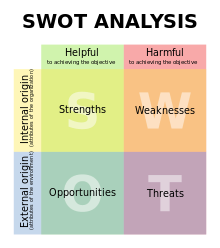Hewlett Packard (HP) is the world’s largest printer
manufacturer. However, a decade ago it began to rethink its corporate level
strategy and acquired Compaq, a leading PC manufacturer. This move was the first major change in the
scope of its business and as the decade progressed it continually developed its
corporate level strategy addressing the question: what businesses should we be
in?
An overview of HP required us to answer these questions;
1. What is
the difference between vision and mission and who are the stakeholders?
2. What is
HP’s Vision and Mission? Can you identify how it meets the needs of its
stakeholders through its objectives?
3. What
different businesses does HP operate in and how does it seek to achieve
competitive advantage?
answers
Question #1
The main difference between vision and mission is that vision focuses more on the future while mission focuses on the present. The vision where the organization wants to go in the future while the Mission is the summary of the beliefs of the organization. Mission focuses on the present.
The members and the users are the stakeholders.
Question #2
• Hewlett-Packard Mission Statement:
"To provide products, services and solutions of the highest quality and deliver more value to our customers that earns their respect and loyalty."
• Hewlett-Packard Vision Statement:
"To view change in the market as an opportunity to grow; to use our profits and our ability to develop and produce innovative products, services and solutions that satisfy emerging customer needs."
• The needs of every stakeholder is profit among other things, HP tries to achieve sufficient profit maximization and create values for their stakeholders and achieve their corporate objectives.
Question #3
HP’s portfolio includes:
Application Services
Business Process Outsourcing
Cloud Services
Consulting Services: Converged Infrastructure
Consulting Services: Transform IT
IT Infrastructure Outsourcing Services
Services by Product
Software Services
Support Services
PC manufacturing
Smartphones manufacturing
Printers
New Strategy for achieving competitive advantage
Passion for the job
To ensure trust and respect
Effective use of team work
Speed and agility
Innovation
Integrity
answers
Hewlett-
Packard SWOT Analysis
The Strengths
•
The company is
Innovative: The Company emphasizes on innovation as a key business ingredient
for business success.
•
The size and scale is
big: The Company is the largest as far as PC is concern
•
The company’s synergy
•
The products &
Services
•
The brand: HP is one of
the most recognize brand in the world.
Weakness
•
Size
•
Recent acquisitions
•
The supply chain
The opportunities
•
IPG
•
Cloud computing
•
Supply chain
The Threat
•
The partners
•
Stiff hardware
competition
•
Supplier
Rationale
for change of scope of business
For about the last five years now HP
has spent a lot of money going into tens of millions of dollars in some kind of
acquisition, somewhere beneficial and others are not.
HP seems to be struggling over a
period of time and significantly after the company bought palm at the cost of
$1.2 billion dollar which is in cash and debt. The company has lost its
dominance of the market share of PC. The introduction of many different
products which did not sell, the drastic fall of its share value, all the forgoing
are what led to the changes in strategy and scope.
Reasons for exiting PC manufacturing
•
The market share is lost
to the competitors who are now more aggressive
•
The drop in sales volume
•
The shift in the use of
PC to tablets and handheld devices.
•
Internal rift
•
Poor budget for R &
D.
Why HP should not exit PC
manufacturing
•
Good brand
•
Large customer data base
•
Brand loyalty
•
Capital base
•
Innovation.
For more research on the topic, you can follow these links;





